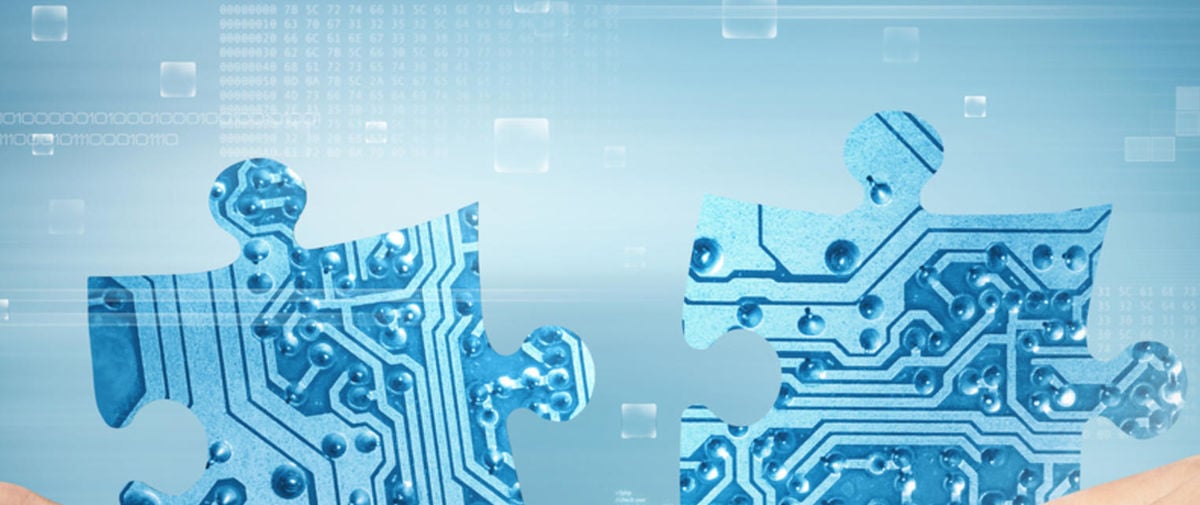Most companies are at a design and test phase in terms of Industrial Internet solutions. Integration into larger, complex systems remains somewhere on the horizon. The full potential of the gathered data will only be truly realized once comprehensive integration into these complex systems becomes a prominent trend. Niall O’Doherty, Director of Business Development Emerging Industries Team at Teradata Corporation, hopes that within five years, the technology necessary for such integration will be commonplace. The question then becomes — will corporate philosophies match the capabilities of these technologies?
Data environments are being inherently redefined due to developments across IoT and IIoT. To do away with detached data “pockets” – which is to say, with data that remains unintegrated into systems or with other data – an overall process of synthesis is necessary. Key to such a synthesis, and subsequent realization of the true value of IoT and IIoT, will be the integration of the already widespread use of sensor data.
“To get to the real transformational value, more of these systems must be put into place. In order for that to happen, sensor data needs to be integrated with product data, customer data, ERP (Enterprise Resource Planning) data and other traditional data. For many organizations, bringing sensor data together with traditional data – and making sense of it all – is still a major challenge,” states Niall O’Doherty.
“I hope that in the next five years we will be able to regard sensor data connected to communications infrastructure as a common feature of business,” he continues.
The increasing flow and current of data across organizations and systems naturally raises pertinent questions about data ownership. The fact that once data enters ecosystems, no single organization, agency or equipment manufacturer is going to have exclusive control of the data and its distribution, casts doubts over the approach of companies and – according to O’Doherty – over the attitudes of individuals.
“Are people going to be willing to share all this information? Are they going to be willing to take the output of their particular optimized process, and put it into the input of another, so that we can build a better understanding of what’s going on in a complex manufacturing environment? I think that a lot these commercial and cultural issues will need to be resolved, otherwise they can really trip up organizations.”
“I hope that in the next five years we will be able to regard sensor data connected to communications infrastructure as a common feature of business.”
Making sense of sensors
With the capacity to extract data from vast processes becoming more prominent, complex analytics must process data in ways that allow for more than simply deciphering averages and statistics. According to O’Doherty, this is particularly imperative for industrial and manufacturing companies.
“With the volumes that sensor data is generating, especially in the industrial world, coupled with the complexity of analytics, you really need to bring the analytics and algorithms to the data. In order to do that, you need a scalable IoT platform.”
In the material handling industry, such a platform could facilitate anything from predictive analytics to looking at how employees move on a factory floor, thus optimizing operations accordingly. O’Doherty uses the enhanced oil industry as an example. By putting highly instrumented equipment on rigs and sensors on the ocean-floor, the Industrial Internet has greatly aided in efficiency and optimizations of complex processes and systems. “What’s innovative for them is how they are now using vast amounts of data to understand the subsurface a lot better,” O’Doherty says.
Same products, new services
For O’Doherty, the creation of new business models via sensor data is not necessarily at the crux of Industrial Internet developments. Instead, he sees business models created for existing products as reaping the benefits of the Industrial Internet in the future.
“I see the power of sensor data and the Industrial Internet in allowing organizations to implement a scale for different business models. Those models may already exist, but as a result of this new data, they can be made more profitable and customer-oriented. It’s about understanding and mitigating risk so that you can potentially implement multiple models for the same products: to different markets, companies or customers.” This also increases the likelihood of new services emerging indirectly from existing products.
The notion of selling services, as opposed to products, is a concrete example of how the evolution of the Industrial Internet allows for the modification of, or experimentation with, existing business models. “For example, the notion of Power by the Hour – meaning a company won’t sell their customers an engine or a train, but instead the power needed to run them – was in fact coined in the 1960s by Bristol Siddeley. So, it’s not necessarily a new business model,” O’Doherty notes. Interestingly, later that decade Bristol Siddeley was bought out by Rolls Royce, currently one of the forerunners in embracing the Industrial Internet.
In order for the rest of the manufacturing world to keep up with the likes of Rolls Royce, O’Doherty reminds CIOs and CEOs of their roles as “enablers,” who first and foremost allow for businesses to change the way they approach products and services in general. “My advice – to a CIO in particular – would be to ensure you build the right infrastructure and environment to allow people in your company to access the data they need, and add the analysis they want,” O’Doherty concludes.
Niall O’Doherty works as Director of Business Development Emerging Industries Team at Teradata Corporation
Image credit: alphaspirit / Shutterstock.com
